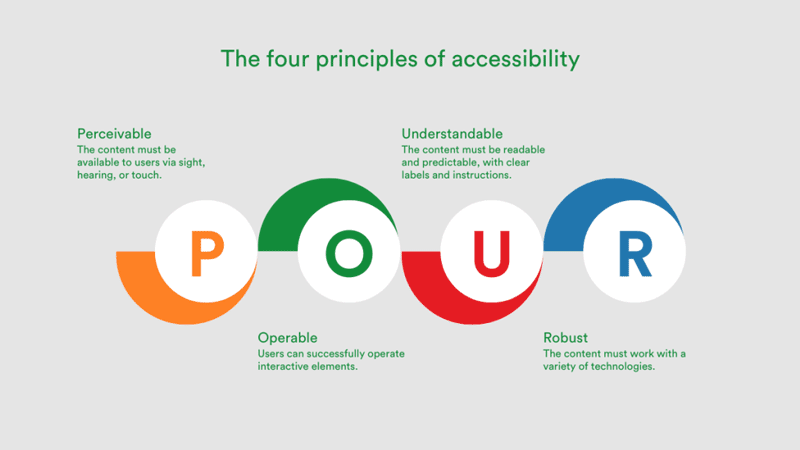Designing for web accessibility: A complete guide to WCAG
Awareness surrounding web accessibility has surged in recent years, due to the significant number of people with disabilities and the growing legal requirements for compliance. In a world that increasingly relies on digital interactions, prioritizing inclusivity is no longer just a choice but a necessity.
This article serves as a comprehensive overview of the Web Content Accessibility Guidelines (WCAG) 2.0, explaining their significance for businesses and offering insights on achieving conformance.
The Significance of Web Accessibility
Improved Inclusiveness
Globally, approximately 1.3 billion individuals live with some form of disability. Beyond visual impairment, a wide variety of challenges are faced by millions. It is vital that web accessibility enhances usability, resulting in improved customer satisfaction.

In the United States of America, 75% of people with disabilities use the internet daily, yet 90% of websites lack usability for those relying on assistive technology. Over 1 billion people worldwide, including 86 million in the USA, may face difficulties with inaccessible websites.
Boost Earnings
Designing with accessibility in mind reaches a broader audience, translating into increased profits. This equates to approximately 15-20% of the population. And this portion of people have a large amount of disposable income. The global market for people with disabilities and their associates is estimated to have over $13 trillion in annual disposable income.
Other examples include:
- In the USA, the visually impaired alone contribute a disposable income of $175 billion.
- The online spending power of people with disabilities globally exceeds AUD$2.2 trillion.
- Customers increasingly prioritize product accessibility, with 38.6% of employees noting it as a purchase motivator.
Avoiding Possible Lawsuits
In the developed world, laws exist to ensure equal treatment for people with disabilities. The Americans with Disabilities Act (ADA), established in 1990, paved the way for full participation and inclusion. Lawsuits against website owners for ADA violations surged by over 30% in the first half of 2023, with 77% filed against organizations with under $25 million in revenue.
Compliance with accessibility principles is crucial for businesses of all sizes. Laws in Australia and the USA mandate accommodations for users with disabilities, while the global WCAG sets minimum standards for international accessibility.

WCAG 2.0: A Framework for Accessibility
The WCAG 2.0, developed by the World Wide Web Consortium (W3C), offers a framework of recommendations for enhancing web content accessibility. The guidelines are based on four accessibility principles known as POUR: Perceivable, Operable, Understandable, and Robust.

The Guidelines at a Glance
The guidelines are categorized into three levels of conformance: A (lowest), AA (middle), and AAA (highest). The POUR principles guide designers in creating content that is accessible to diverse users and situations. While Level A sets a minimum standard, adherence to AA is recommended for comprehensive accessibility.
Principles and Guidelines of WCAG 2.0
Perceivable: Easy to See
Ensure information and user interface components are presented in ways users can perceive. This includes providing text alternatives for non-text content, offering alternatives for time-based media, creating adaptable content, and making content distinguishable.
Operable: Simple to Use
Design interactive elements that all users can successfully operate. This involves making them keyboard accessible, providing enough time for users to read and use content, avoiding content that could cause seizures or physical reactions, and offering ways to help users navigate.
Understandable: Clear to Understand
Make content predictable with clear labels and instructions. This includes making text readable and understandable, ensuring content appears and operates predictably, and providing input assistance to help users avoid and correct mistakes.
Robust: Easy to Interpret
Ensure the content is robust enough to be reliably interpreted by a wide variety of user agents, including assistive technologies. This involves maximizing compatibility with current and future user tools.

Conclusion
Incorporating accessibility into web design is crucial for enhancing the user experience, increasing profits, and mitigating legal liabilities. Adhering to the core principles outlined in WCAG 2.0 – perceivable, operable, understandable, and robust – is essential for creating an inclusive digital environment.
For those wanting to ensure that their web designs meet WCAG 2.0 guidelines, download the concise web accessibility checklist. A handy tool to create web design that is accessible to all.


